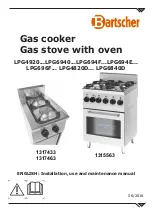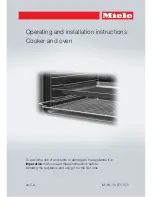
Cleaning and maintenance
37
EN
4 Cleaning and maintenance
4.1 Instructions
4.2 Cleaning the surfaces
To keep the surfaces in good condition,
they should be cleaned regularly after use.
Let them cool first.
Ordinary daily cleaning
Always and only use specific products that
do not contain abrasives or chlorine-based
acids.
Pour the product onto a damp cloth and
wipe the surface, rinse thoroughly and dry
with a soft cloth or a microfibre cloth.
Food stains or residues
Do not use steel sponges and sharp
scrapers as they will damage the surface.
Use normal, non-abrasive products and a
wooden or plastic tool, if necessary. Rinse
thoroughly and dry with a soft cloth or a
microfibre cloth.
Do not allow residues of sugary foods (such
as jam) to set inside the oven. If left to set for
too long, they might damage the enamel
lining of the oven.
Improper use
Risk of damage to surfaces
• Do not use steam jets to clean the
appliance.
• Do not use cleaning products containing
chlorine, ammonia or bleach on parts
made of steel or that have metallic
surface finishes (e.g. anodizing, nickel-
or chromium-plating).
• Do not use abrasive or corrosive
detergents (e.g. scouring powders, stain
removers and metallic sponges) on
glass parts.
• Do not use rough or abrasive materials
or sharp metal scrapers.
• Do not wash removable parts such as
the hob pan support grids, flame-
spreader crowns and burner caps in the
dishwasher.
• Do not spill sugar or sweet mixtures on
the hob while cooking or place
materials or substances which could melt
on it (plastic or tin foil).
We recommend the use of
cleaning products distributed by
the manufacturer.
After cleaning, dry the appliance
thoroughly to prevent any water or
detergent from interfering with its
operation or creating unsightly
marks.
















































